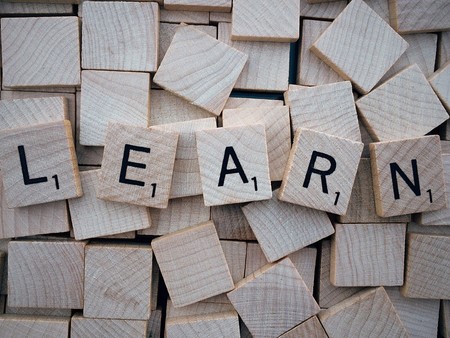
The Editing Company Inc.
Toronto, Ontario
RECENT POSTS
TEC Blog
Categories
Show All- Editing
- Grammar
- Usage
- Style
- Editor/writer
- Publishing
- Business
- Writing
- Writers support group
- Event
- Proofreading
- Copyright and permissions
- Usage
- Book reviews
- Editing new media
- Technology
- Books & libraries
- Ttc stories
- Editing & marketing
- Office happenings
- Social media & community
- Language & editing
- Social media
- Editing & marketing
- Indexing
- Book design
- Tec clients
- Guest blogger
- Creative women doing sixty
- Book clubs
- Books and reading
- Ebook technology & services
- Editing numbers
- Editing & technologies
- Opera, movies

12 Things I Learned Working with TEC’s Editing Team
by Molly Rookwood
Published at 2019-08-28
Over the years, TEC has grown, acquiring new editors and a new office. One of TEC’s greatest strengths is that its editors work together in the same room, creating a collegiate space of teamwork and collaboration. During my time at TEC, I learned more than I could have imagined by spending my days in a team of outstanding editors. In honour of TEC turning 12 this September, here are 12 of the most important things that TEC and its editors taught me.
1. You can’t achieve perfection in every editing project.
As editors, our job is to get writing into as perfect condition as we possibly can. Like any pursuit, however, perfection really means as good as you can get considering various circumstances. These circumstances include time restraints, budget, quality of the work when we receive it, and so on. As one of my co-editors once said to me, “It can be clean and budget-friendly, but it won’t be finished quickly. It can be clean and finished quickly, but it won’t be cheap. Or it can be budget-friendly and finished quickly, but it won’t be especially clean.”
2. The rules of grammar, punctuation, and language change.
If you’ve ever read an old book, you’ll have noticed that language conventions shift over time. Words change meaning and grammar usage shifts. Semicolons are used differently today than they were a hundred years ago. We use reference books to stay as consistent as possible with the conventions of the day, but these are constantly changing, and we must change with them.
3. The text of each project tells us how to edit it.
While copyediting (at least for nonfiction; fiction works differently and has different rules) is largely a matter of following grammar conventions in every project, each author and each text has its own tone, style, and flow. As copyeditors, we must be cognizant of the tone of the text and stay consistent to that authorial voice while editing. The text of each project shows us how to do our job.
4. Never forget the person on the other end of the document.
Beyond that, editing is a conversation with the authors. We leave queries in the margins, and then they respond by either incorporating our feedback into their pieces or by asking or answering questions to help clarify points of confusion. Both editors and authors need to remember that there is a real person on the receiving end of their work and that the way we phrase our comments can be affirming and constructive or crushing.
5. The authors always have the final say, and if they don’t like what you’ve done with their writing, it is their prerogative to change it back.
When we work on pieces of writing, it can be easy for editors to become attached to our preferences for how to word something or how we want a sentence to sound. No matter how much work an editor puts into a project, however, it is always the author’s project, not the editor’s. Authors always have the final say, and they can always override their editors if they disagree with a suggestion. All we can do, as editors, is suggest fixes based on our knowledge of usage and consistency. After that, it’s up to the author.
6. There is no one right way to fix a sentence.
Because language conventions change and evolve, and because writing is an art and not a science, there is never a single way to fix a sentence. There are better ways and worse ways, but there is never one “right” way to go about writing and editing. Sometimes the way to make a sentence the clearest is to ignore certain rules entirely. Legend has it that Churchill, upon receiving feedback about putting prepositions at the end of a sentence, replied, “This is the sort of nonsense up with which I will not put.” Grammatically, that sentence is correct. Logically? A nightmare.
7. Asking for help is always better than making a mistake, and will help to protect your credibility and save you from leaving something incorrect in the writer’s work.
One of the great things about working with a team of editors was that whenever I was stumped by a sentence, I always had at least two other editors at hand to weigh in and suggest alternative fixes. Working at TEC helped me to form a community of editors to turn to for help when I needed it. Asking for help when needed is always worthwhile in editing, as it protects both your own credibility and your author’s and prevents errors from sneaking into the final product.
8. The worst thing you can do as an editor is to introduce new problems to a text.
On a similar note, when making changes to a text, editors should double- and triple-check that our suggested edits are not introducing problems or changing meanings. We use style sheets to keep track of names and stylistic choices, but part of the reason that editors try to make as few changes as possible is to avoid changing the meaning or intention of textual elements.
9. En dashes are even more controversial than semicolons, and most people don’t know how to use them.
When most people think about dashes, they think about hyphens, which are most commonly used to link words, and em dashes, which are used to link parts of sentences or indicate breaks. More confusing are en dashes, which are longer than hyphens but shorter than em dashes. They’re handy for linking multi-word concepts or number ranges, but the difference between en dashes and hyphens confuses most writers and is even tricky for editors. Some editors, as I learned recently, believe that the en dash is so confusing that it should be abandoned altogether. Whether this is the way of the future remains to be seen. I hope not.
10. Resource books are guides, not law.
Dictionaries are an incredible resource, but author preferences for specific spellings might trump the dictionary. Manuals like the Chicago Manual of Style and the American Psychological Association Stylebook are, likewise, incredible resources, but must be treated as resources to be adapted to projects as needed. As I have emphasized, these books act as a guide to the spelling and grammar conventions of the present day and are adapted as these conventions change. Language is an evolving art, and editing cannot be learned from a textbook.
11. Breaks are important for maintaining a sharp eye.
A lovely thing about TEC is that every day, all of the editors break at the same time and eat lunch together. This ensures that everyone takes time away from their computers to clear their minds and give their eyes a break. Editing is focus-intensive work, and if we don’t make time to step away from our computers, we become more likely to make mistakes. Twitter’s freelance editors have popularized #stetwalk, in which we build an online community and encourage each other to take daily breaks, to leave things as they are for the moment (stet) and go for a walk before getting back to work.
12. Editors, like writers, are creative, passionate people who want an author’s work to succeed just as much as the author. We love our work and aim for beauty and style in the writing we work with.
Molly Rookwood is a freelance editor and grammar-enthusiast based in Halifax, Nova Scotia. She can be reached at mollyrookwood@gmail.com.
For more about how editors do what they do, check out our awesome blogs at https://www.theeditingco.com/blog/editing




